With its colorful homes, ancient cliffs, evocative ruins, castles, lakes, and rivers (of both water and beer), Ireland is a marvelous destination for all tastes. Whether you’re looking for a cultural holiday, full nature immersion, or for a simple leisure getaway, with Ireland you can’t get wrong.
In this list, I present you the 10 Most Beautiful Places in Ireland that, in my opinion, you absolutely cannot miss and I’ll share with you some personal tips from my experience to enjoy them to the fullest!
Thanks to Ireland being a relatively small country, with good planning (and on a budget!) I believe 20 days to be a realistic estimation of the time you would need to see all of the places mentioned without having to rush excessively.
If you’re interested in more information on how to move around, where to stay, and what budget a Full Irish Journey may cost, make sure to check also my articles Ireland: Hotspots Map and How to Move Around and Ireland: The Budget. Sláinte!
Ready, GO!
1. Dublin
Where else could start your Irish trip if not in Dublin? 🙂
Situated on a bay on the east coast, at the mouth of River Liffey, Dublin is the largest city in Ireland (1.1M people) and the one the more than any other city on the island embraced modernity; although while always keeping an eye to its rich traditions and ancient past.
As century after century Dublin gave birth to worldwide renowned artists (from writers such as James Joice, Oscar Wilde, Bernard Shaw, and Patrik Kanavagh; to musicians such U2, The Dubliners, Thin Lizzy, etc.) the city became famed all over the world through music and novels and today it boasts an incredible cultural heritage and a suggestive poetic aura.
Strolling through the crowded streets and numerous bridges of the Irish Capital is an experience full of surprises where fragments of history and glimpses of art are behind every corner: no better way to start an Irish trip.
Among the most iconic landmarks, you should absolutely visit I need to mention the influential Trinity College, the 120m-tall Dublin Spire, and the St.Patrick’s Cathedral.
Furthermore, if you’re a beer lover like me, you absolutely cannot miss a pilgrimage to the St. James’s Gate Brewery, the place where Arthur Guinness first started producing its world-celebrated Guinness stout in 1759. The guided visit takes about one hour and ends with a good pint of authentic draft Guinness stout.
Hotspots to See: Trinity College, Spire of Dublin, St. Patrick’s Cathedral, Grafton Street, The National Gallery, The Irish Emigration Museum, Dublin Writers Museum, Old Jameson Distillery, The Temple Bar, The Church Pub,
How Many Days to Visit Dublin: 2 Days
2. Galway
Moving now on the west coast, in Galway, you’ll be greeted by another face of Ireland.
In fact, with a population barely scratching the 80.000 souls, in Galway, the bustling crowds of Dublin are just a far echo that fades at the doors of old-fashioned pubs, covered by the cheerful vibrations of harp strings. Here minutes run slower, streets are easily walkable and the scenery just brings back time.
Still, don’t get fooled by its small size: the town of Galway is vibrant with life!
Boasting a strong artistic identity, Galway is, through the year, the host of dozens of music and art’s festivals which year after year raised the international fame of the city as the “cultural heart of Ireland” and contributed to getting it elected as the European Capital of Culture in 2020.
Streets are filled to the brim with small ateliers, local independent shops, and home-breweries. If you’re looking for the true Irish experience, sipping a dark pint in one of Galway’s countless pubs while tasting excellent seafood and listening to traditional Irish folk-music is a good way to start!
Last but not least, Galway is also an optimal home-base for day trips to nearby attractions such as the Burren, Connemara, and the Cliffs of Moher.
Hotspots to See: Eyre Square, Galway Cathedral, River Corrib Bridges, the Claddagh,
How Many Days to Visit Galway: 3 Days (1 for the city, 2 more visiting the nearby stunning countryside)
3.Cliffs of Moher (Claire)
One hour drive south of Galway, in the county of Claire, the Cliffs of Moher are one of the most spectacular sights on Earth and for sure one of the most iconic hotspots in Ireland.
Here, the lush grass fields are abruptly broken by fourteen kilometers of humongous cliffs, with the tallest point being a vertical 214m drop into the Atlantic Ocean. The majesty of this place is indescribable.
Rain or shine, the Cliffs of Moher make up for one of those mesmerizing places that remind you that nature is mighty, unpredictable, and unstoppable. My suggestion is to reserve enough time for visiting this site to slowly take a walk and savor the different views to the fullest, better with a pint of Guinness 😉
Personally, I was so overwhelmed by the beauty of this place that I felt like inserting it in my article Top 10 Natural Wonders to See in your Lifetime describing it as one of ten most beautiful natural places I’ve seen to date.
The last tip, I would suggest combining in the same day the trip to the cliffs with the visit to the Burren National Park, a stunning protected geological site in the proximity full of curious and otherworldly rock formations.
4. Connemmara (Galway)
About one-hour North-West of Galway, the Connemara is a region of wilderness and contrast, one of the few places in Ireland where the shocking green has to give space to bright shades of yellow.
Connemara is a rugged landscape which, thanks to its remote location, managed to stay off the mass-tourism radar and to preserve intact its whole natural scenery and cultural heritage. As a matter of fact, here is where you’ll encounter the highest percentage of native Irish-speakers of the whole island (about 75% of the total population).
Rocky hills, blue lakes, distinctive little towns, and welcoming locals make Connemmara the ideal place for walking in nature. The region is plenty of trails for all fitness conditions and spending at least one day here is definitely worth your time!
Hotspots to See: Connemara National Park, Kylemore Abbey & Victorian Walled Garden, Killary Fjord, Inishboffin, Omey Island, Glengowla Mines, Clifden
5. Blarney Castle (Cork)
They say that if you kiss the Blarney’s stone you’ll get the gift of eloquence. It’s funny that to kiss it, you may lose your words while having to stick-out head-down from the battlements of a 14th-century castle!
The Blarney Castle and Gardens is a park complex in the outskirts of Cork (Southern Ireland) full of legends and mysteries. On the site, there are several gardens, each one with a different and unique style and feel, set along two walks taking respectively 45minutes and 90minutes.
At the center of the park are the Rock Close and the Blarney Castle.
The Close, (my favorite highlight of the park) is a mystical and romantic spot where art design entwines with natural elements (rocks, trees, roots, etc.) into a mystical garden of beauty.
With the “Wishing Steps”, the “Fairy Glade” and all its other suggestive areas, the Rock Close is a truly evocative place definitely worth a visit. Furthermore, if you’re hunting for leprechauns, I believe there’s no place with better chances to spot one than this 😉
Passing now to the Blarney Castle, this is the main attraction of the park. This is an ancient building originally of the medieval ages in which stone structure has been well-maintained till our days (although the interior is almost empty).
The Castle offers the most beautiful view over the surrounding park and is also home to the legendary Blarney Stone, a stone of Carboniferous Limestone situated on the castle’s peak edge which visitors can kiss by leaning backward and head-down from the parapet’s edge.
Although today safety measures are in place, the experience can still be highly adrenalin for some people while being certainly curious for all. On good summer days, be aware that the queue to kiss the stone might be up to two hours, so better going in the early morning if you wish to try that experience.
6. Cork
With over 200.000 people, Cork is the second-largest city in Ireland and lays on the Southern Coast of the island.
Often called “the city for young people”, Cork enjoys a vibrant night-life and a rich variety of pubs and fine dining (yes, I know that everywhere in Ireland there’s a pub…in Cork, they’re just every second door!).
The pulsing heart of the city is its main road, St.Patrick’s Steet, and its connected alleys all of which proliferate with art galleries, exceptional restaurants, shopping malls, and of course, pubs for every taste (btw my favorites are the Old Oak and, as a rock fan, the Fred Zeppelin!).
To mention, if you’re into Jazz, the Cork Jazz festival in October, which takes place for four days around all pubs of the city, is something that’ll leave you speechless!
Still, Cork is not only its city center: the outskirts are alive and rocking too! With picturesque fisherman villages, colorful towns, creative restaurants, and countless surprising entertainment facilities, Cork and its county are built to enjoy life and it’ll never let you down! Try to believe 😉
Hotspots to See: St.Patrick Street, Cork City Gaol, The English Market, St. Fin Barre’s Cathedral, Cork Butter Museum, Blarney Castle, Carrigaline, Kinsale, Crosshaven, Bantry
How Many Days to Visit Galway: 3 Days (for both enjoying the city life and visit the surroundings)
7. Gap of Dunloe (Killarney, Kerry)
Here we come in the county of Kerry, the South-West corner of Ireland and, in my opinion, the place that more closely resembles the common stereotype of “traditional Ireland”.
Far from here are the crowds of Dublin, the festivals of Galway, and the good life of Cork; in the county of Kerry the highlight is only nature: sheep, wild goats, cute puffins, the silent ocean, the whispering wind, the ancient rocks, the emerald hills… here everything falls into place and it feels pure, beautiful and peaceful.
Our journey into this county starts from the Gap of Dunloe, the ultimate highlight of the Killarney National Park, a massive 102.9km² protected reserve situated at the doors of the town that gives it its name: Killarney.
The Gap of Dunloe is a narrow mountain pass that originated over 25.000 years ago (during the last ice age) where a gentle river separates the eroded musk-covered rocky hills on its sides.
Best visited by bike, the gap of Dunloe offers a 360°C immersion into the harsh character of Ireland: carbon-grey stones, sharp crags, short thick grass, and a feeling of rural loneliness are all the friends that will accompany you on your journey throw the valley.
Personally, the first time I’ve been riding through this place on my bike I remember a tear of astonishment falling down my cheek… if you plan to visit the county of Kerry, trust me, you cannot miss this place!
Hotspots to See Nearby: Killarney National Park,
How Many Days to Visit Killarney: 3 Days (Killarney is the ideal home-base for visiting Kerry!)
8. Dingle Peninsula (Kerry)
The Dingle Peninsula lays in the remote North-Western part of County Kerry and it’s not too far from both Tralee and Killarney, making it an ideal spot for a one-day trip.
Here, the rugged coast is bejeweled by pristine beaches and green emerald grassland, stone walls in the middle of nowhere separate the lushing fields while the Atlantic Ocean is always by your side. Off the beaten track, the Dingle Peninsula is a place where loneliness tastes
The best options to visit the peninsula are an organized bus tour or, if you can drive your own car (suggested), to get lost driving on the Slea Head Drive, a small part of the larger Wild Atlantic Way, a 2500km-long road which runs through all the Irish Western Coast from North to South.
The road is as scenic as it gets: hilly, narrow, twisted, panoramic, unique!
Hotspots to See Nearby: Inch Beach, Connor Pass, Camp Town, Blasket Islands, Clogher Head, Ballycurrane, Dunquin Pier (not with the car!), Slea Head Viewpoint, Great Blasket Island, mt. Brandon
9. Ring of Kerry (Kerry)
Last but not least, in this amazing county we find the Ring of Kerry, a 179 kilometers-long scenic circular road around the most South-Western part of Ireland.
This extensive tourist route takes approximately 3,5 hours and brings you through the highest mountains in Ireland, lonely lovely farms, medieval ruins, rocky rural coasts and the most surprisingly well-hidden pubs of the island; all unbelievable sights worth more than any word!
When I first visited the Ring of Kerry, I decided to join an organised half-day trip and in total the ride took 6 hours as my bus broke down along the way (yeiih!).
The positive side of this though, has been that I had plenty of time to stroll around a remote part of the Ring where otherwise I would have never stopped, and it was so wildly beautiful that it became the best part of my visit.
Thus, as a tip I would suggest you, if you have the chance, to rent a car and drive by yourself through the ring. This will give you the freedom to go at your own pace, stop wherever you feel like and enjoy the incredible wild sights this region has to offer in a more intimate way.
Just remember to drive slowly and be careful of sheeps and cows on the road. As the traffic is almost non-existent, they are allowed to roam freely through the fields car accidents due to animal crossing all but uncommon.
Hotspots to See Nearby: Carrauntoohil (highest mountain in Ireland), Valentia Island, Old Barracks Heritage Center, Derrynane National Historic Park, Skellig Islands, Kenmare, Portmagee, Cahersiveen, Cahergal Stone Fort
10. The Giant’s Causeway (Antrim)
With end this list by moving in the Antrim county, in northern Ireland (if you wonder why Ireland is divided in two, be sure to check out my article Ireland: 10 Funny Curiosities you Didn’t Know About 😉 ).
Here, about one hour drive from Belfast, we find the Giant’s Causeway, an unbelievable vulcanic rock formation composed by over 40.000 interlocking hexagonal-based basalt columns. The site is so strange and unique that it’s hard to believe for human eye that it’s just the fruit of mother nature’s art.
Ancient people though, preferred to believe in another more fascinating story. As the legend goes, a long long time ago, an Irish Giant (Fionn) built the causeway to challange a rival Scottish Giant (Benandonner).
Once found out that it’s Scottish counterpart was much bigger then him, Fionn disguised himself with baby cloth and Benandonner, seeing the size of the baby got scared thinking about how huge the father could have been. So, he run frightened back to Scotland and destroyed the causeway forever.
BONUS. Crosshaven Ruins (Cork)
Ok, I said Top 10, but this is a bonus! In the end, I want to share with you my absolute favorite (and kinda hidden) place in Ireland: Crosshaven, a little coastal fishermen’s village South of Cork.
At first, this may look like a place like many others: inviting small and dark town pubs, a small dock, the strong sea salt smell… Still, just 15 minutes of walking outside the village hide a place of unbelievable beauty. A rocky beach, serene green countryside, and the mooing of cows accompany the road until you spot a church in the distance, on a hill.
I admit the first time I found this site by pure luck when out of curiosity I decided to climb to the peak of the hill. Once on the edge, what my eyes saw were the ruins of an ancient church half-covered by ivy plants and immersed in a centenary graveyard full of celtic crosses and almost illegible gravestones.
What I found outrageously mind-blowing of this place, is that although it was a graveyard, I couldn’t feel any death around but the total opposite: the luxuriant nature covering the cold stones, the birds happily chirping, the bright blue of the sea on one side and the sky above on the other… they were all happily cheering about life!
One time I visited the place, I also found two children playing hide & seek between the gravestones and an incredibly unexpected and suggestive image. Overall, both the cemetery and the views from the open-roofed church to the ocean are just purely breathtaking and if you’re looking for the perfect photo of celtic crosses, you won’t find a better place.
Conclusion
This was the list of my favourite Irish places and what I believe should absolutely not be missed! Do you have any further suggestion? You think something else should be included or you just need more information on some of the previous? Let me know in the comment belows 🙂
Also don’t forget to check out the next articles if you’re looking to plan a trip to Ireland like a boss! Keep in Touch!
Ireland Travel Guide
Content Summary
1) Ireland: The Top 10 Most Beautiful Places
Ireland: Hotspots Map and How to Move Around
The Hotspot MapHere is the Ireland Hotspot Map that will help you navigate the island. You can click on the different pins for more information about the places. I included the Top 10 Most Beautiful Places from the previous article and added some more...
Ireland: The Budget
Ireland, How much do you cost Me? Is it possible to travel Ireland on a budget? Short answer, yes! Ireland is a surprisingly backpacker-friendly country, in which low cost alternatives (although not shamingly cheap) are almost always available if you're willing to...
Ireland: What to Pack
Think Rain or Shine! Did you know that the Irish have the widest vocabulary for describing rain on Earth? Wet rain, drizzlin' rain, horizontal rain, sore rain, spitting rain, pissing rain, bucketing rain... there's a reason why! The most important and essential...
Ireland: 10 Funny Curiosities you Didn’t Know About
Weird sports, ancient symbolism, pots of gold at the end of the rainbow, and peculiar drinking habits are but a few of the curiosities that make the Emerald Island so special and unique. If you're a person curious at heart like me and you love constantly learning new...













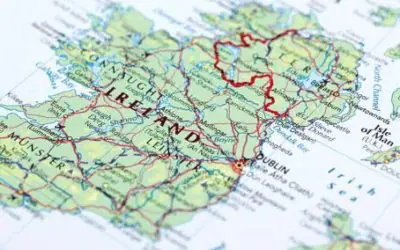

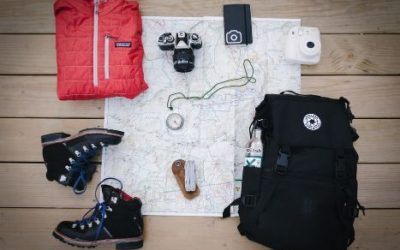
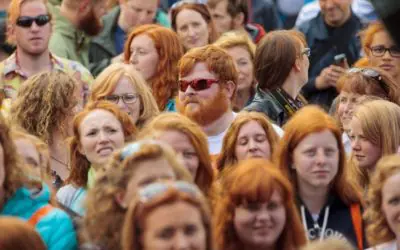
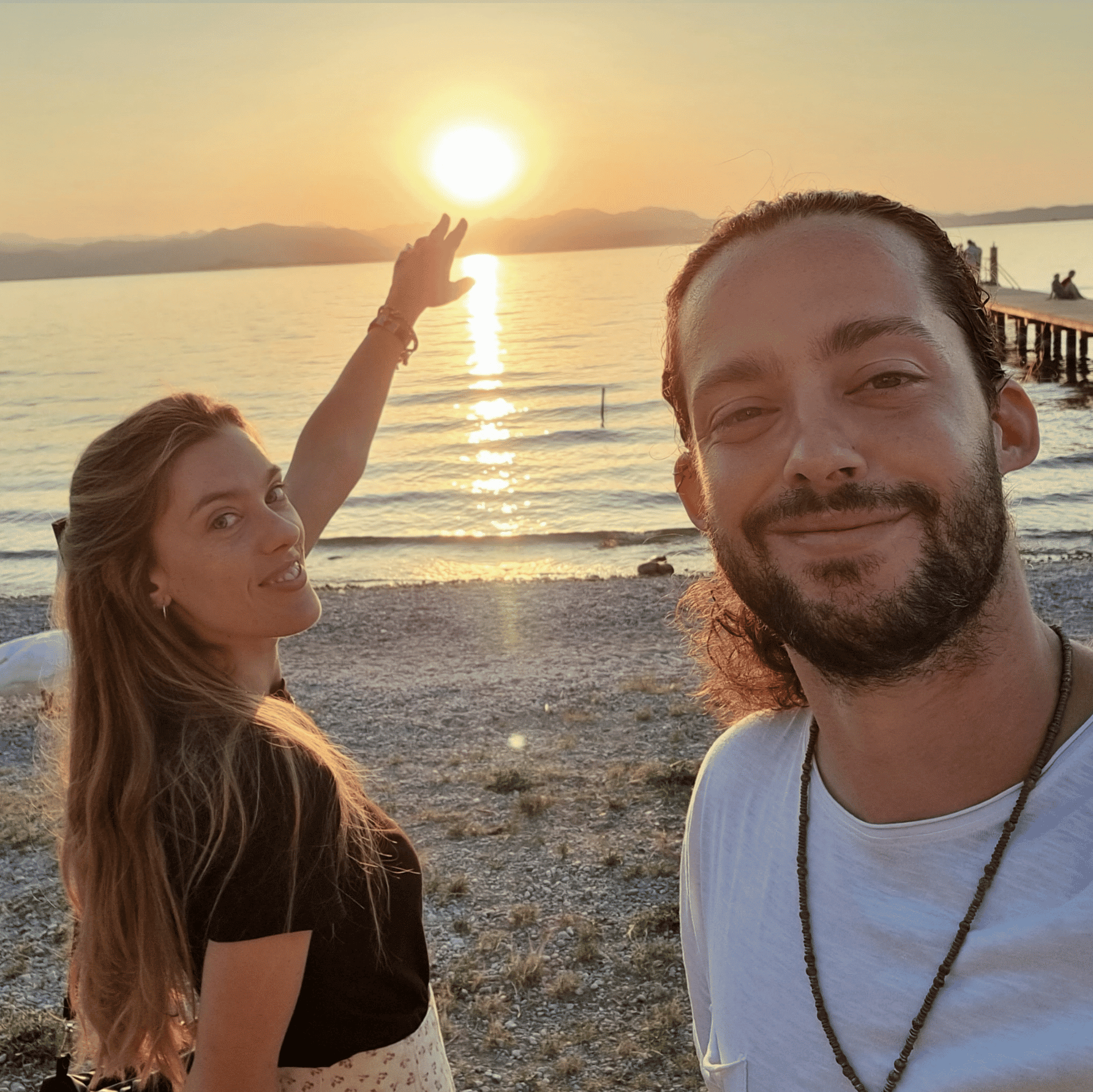
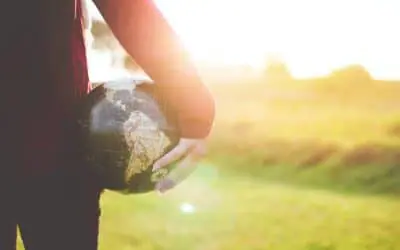

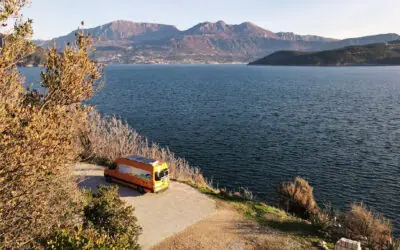

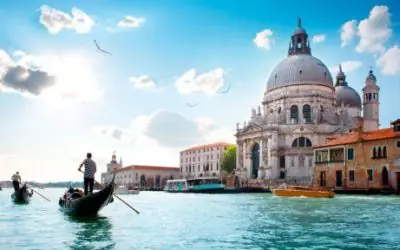

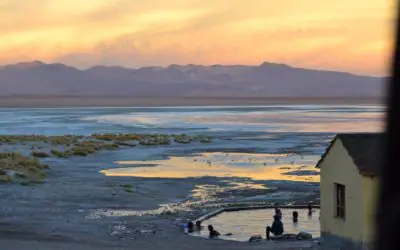
0 Comments